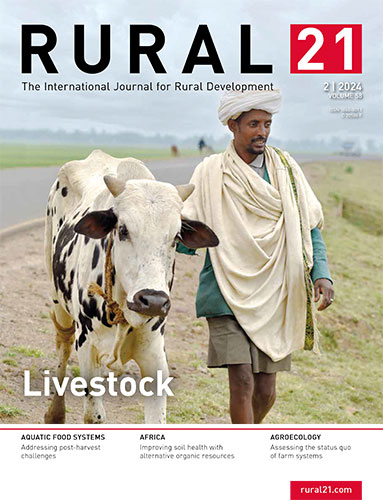 Read this article in French
Read this article in French- Share this article
- Subscribe to our newsletter
Complacency is escalating the costs of eradicating hunger by 2030
A study conducted by the Center for Development Research (ZEF) at the University of Bonn in Germany shows that by implementing ten short-term measures with immediate impact and high potential for hunger reduction, the G7 commitment can still be achieved in the next six years by increasing investments in food and agriculture by USD 27 billion per year. This is an increase by 90 per cent compared to an earlier estimate of the same authors from ZEF and the UN Food and Agriculture Organization (FAO) four years ago.
However, the cost of additional investments for eradicating hunger by 2030 using the proposed measures would escalate to USD 90 billion annually. Therefore, if Zero Hunger is to become a reality, short-term interventions will need to be combined with long-term investments that can have a lasting impact beyond 2030.
To this end, a comprehensive innovation agenda is needed that balances short-term impactful interventions with additional public and private investments to sustainably enhance the productivity of global food systems. The ZEF study estimates that these measures would require additional investments of USD 21 billion annually to end hunger by 2040.
Scenarios for reaching the SDG 2
Two scenarios are presented in the 2024 study:
(1) Urgency for 2030 – actions with short-term impactful investments:
- Meeting the G7 commitment of lifting 500 million people out of hunger and malnutrition by 2030 could be achieved by increasing existing investments by USD 27 billion annually (or USD 146 billion in total between 2025 and 2030). This is more than double the estimate of USD 11-14 billion annually projected in 2020.
- The ten short-term measures can lift about 700 million people out of hunger and malnutrition until 2030 at additional costs of USD 93 billion annually (or USD 512 billion in total).
(2) Realism with urgency – investing in ending hunger by 2040 without further delay
- It would be possible to lift 500 million individuals out of hunger and malnutrition by 2040 by increasing investments by approximately USD 10 billion annually (or USD 116 billion in total between 2025 and 2040).
- To lift about 700 million people out of hunger and malnutrition by 2040, the additional costs almost double to about USD 21 billion annually (or USD 223 billion in total).
Implications for policies and global food system governance
In the fight against global hunger, the human and financial costs of complacency are significant, the researchers note in their study. With 2030 approaching, feasible investment options become restricted and the cost of achieving Zero Hunger escalates. Extending the SDG 2 end line to 2040 would be a sad consequence of lack of sufficient action in the first decade of the SDGs. The researchers suggest the following issues related to food systems governance and related broader policy implications:
1. Immediate and concerted efforts are required to mobilise substantial investments in short-term hunger reduction interventions, focusing on transfers to the needy, humanitarian assistance and social protection programmes.
2. Combining short-term actions with long-term strategies is essential for sustainable hunger reduction beyond 2030, requiring a comprehensive innovation agenda that balances short-term impactful interventions with additional public and private investments in productivity-enhancing and sustainable solutions.
3. The important global policy actions that require attention to end hunger are:
- facilitating integration of global level actions in the key areas of hunger reduction together with actions on climate resilience, health, biodiversity and international trade
- developing a strong finance agenda for the investments needed to end hunger and achieve other key nutrition targets
- encouraging institutional innovations and enhanced coordination for a sound science – policy interface from national to global levels
- strengthening the capacities for national level implementation, especially in emerging economies, with increased domestic and international support
- leveraging initiatives such as the Global Alliance Against Hunger and Poverty proposed by the Brazilian G20 presidency to accelerate progress in this process
(ZEF/wi)
For more information:
The ZEF study is available here and the related policy brief here.





Add a comment
Be the First to Comment